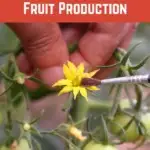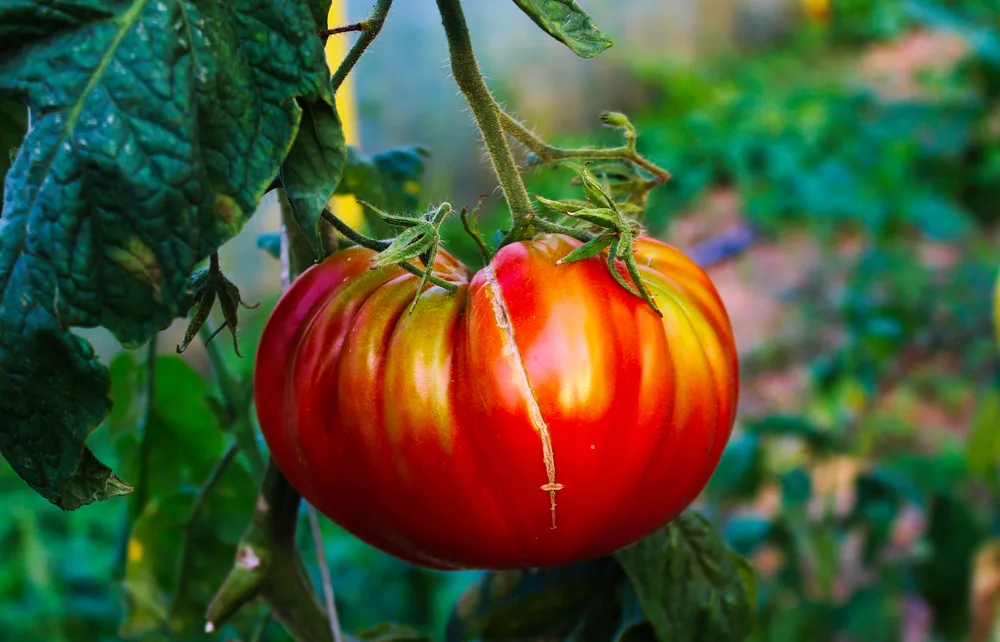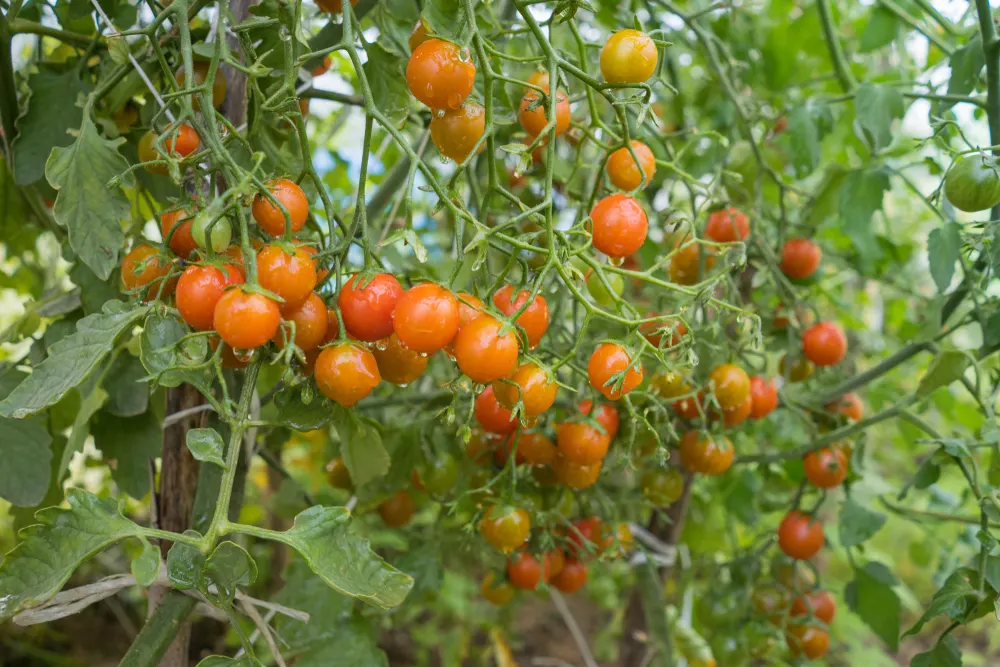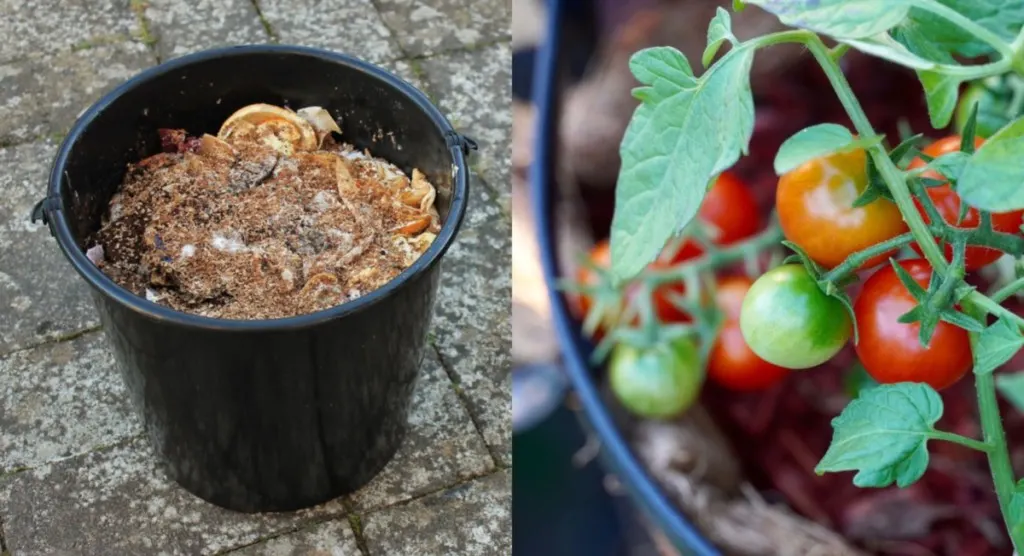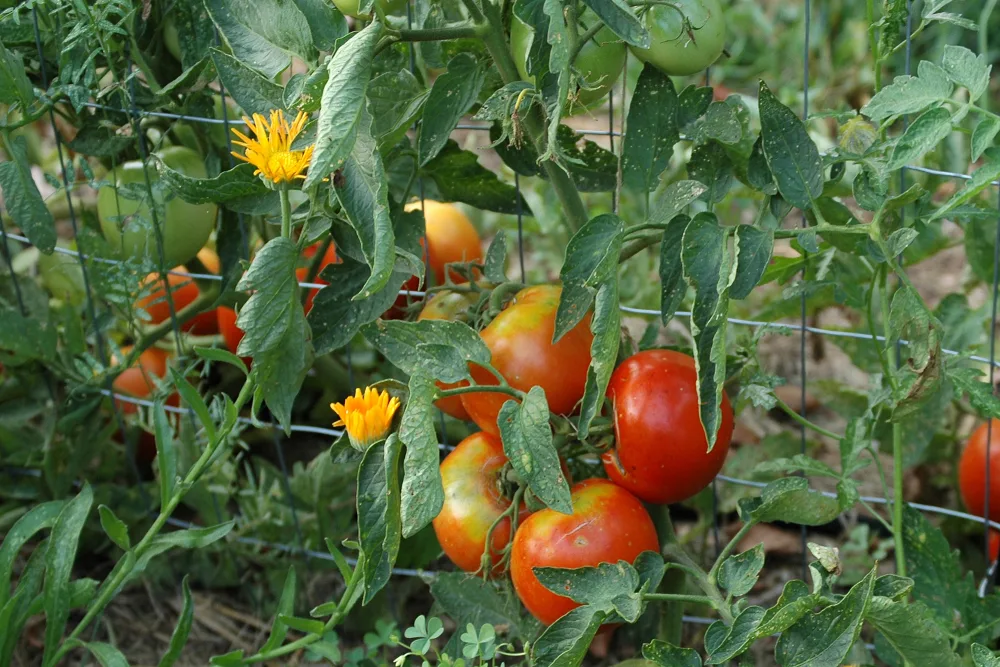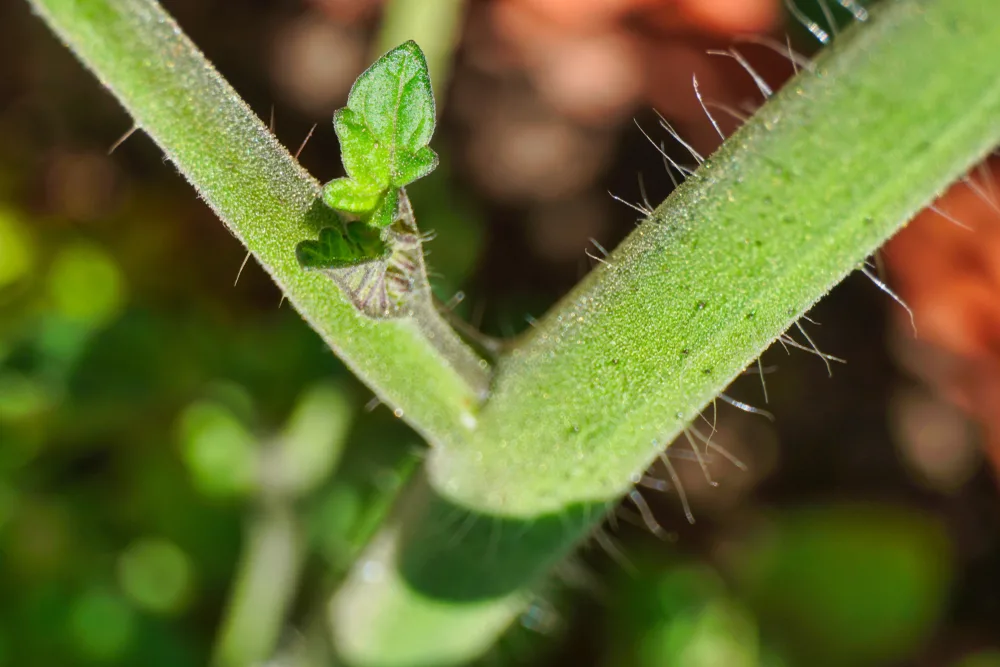
If you are new to greenhouse gardening you may not have experienced issues with growing tomatoes.
However, if you grow these plants long enough indoors you are sure to experience some struggles.
Identifying the source of these struggles early on makes the difference between a robust harvest and a so-so harvest.
The good news is, there are remedies for the issues and ways to ensure a successful harvest.
Here are some common issues that occur when growing tomatoes in a greenhouse:
4 Common Issues Growing Tomatoes In A Greenhouse
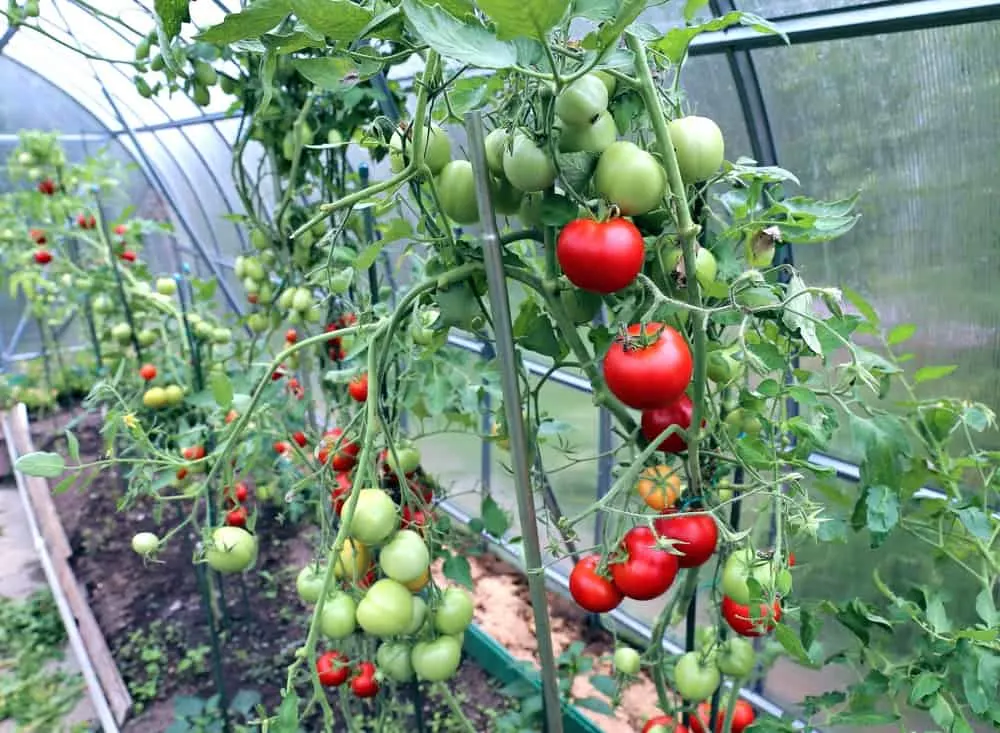
1. Choosing the wrong variety
For the best success, it is essential that you plant only tomato varieties that are bred for greenhouse growing – not field or garden growing.
Choosing the right variety gives you a head start to success when growing in a greenhouse.
The most widely used variety in greenhouse growing in the United States is the Dutch hybrid beefsteak-type tomato: Trust.
If you like heirloom varieties the hybrids Marneo (like Cherokee Purple) and Margold (like Striped Germans), are best.
2. Planting too close together
While the tendency might be to cram as many tomatoes into your greenhouse as possible, this is not a wise option.
Tomatoes that are grown both in a greenhouse as well as outside need space for air circulation. Tomato plants are prone to foliar diseases including blight, and leaf spot and require good air movement.
To be safe give each tomato plant at least four square feet of space.
3. Watering issues
Full-size tomato plants require two to three quarts of water per day when it is sunny. The water needs to be delivered at regular intervals. Irregular, or over-watering, is the single biggest cause of blossom-end rot.
One of the advantages of greenhouse gardening is that you have control over the irrigation. Just be sure to use drip irrigation at the roots, not overhead irrigation that leaves the plant’s foliage wet and susceptible to disease.
4. Lack of pollinators
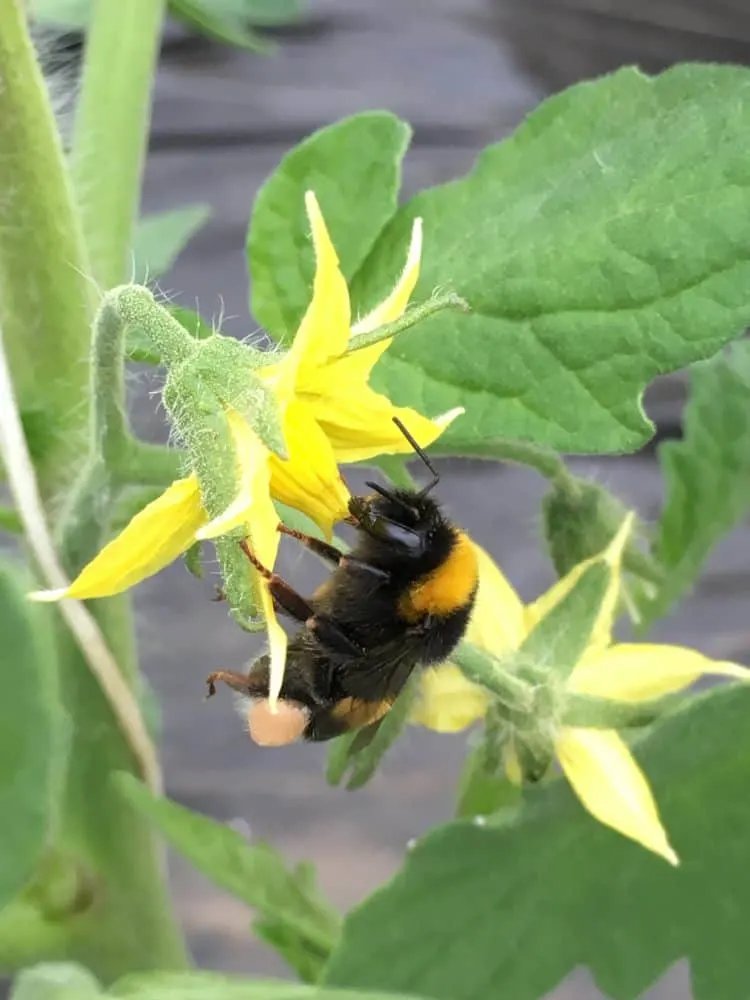
One of the biggest challenges of growing tomatoes in a greenhouse is the lack of wind or bugs, such as bees, to help with pollination.
Without pollination, there is no fruit.
To overcome this, gardeners have developed a creative method of hand pollinating plants using a paintbrush.
Keep in mind that tomatoes contain both male and female parts and are self-pollinating. If left alone, tomatoes will have a 20% – 30% fruit set rate without the help of pollinators or hand pollination.
Over time, gravity causes the pollen to fall from the male portion of the flower to the female portion.
However, to have a higher percentage of fruit set, you can hand pollinate plants.
How To Hand Pollinate Tomatoes
Follow the steps below to hand pollinate your greenhouse tomatoes using a paintbrush.
Paintbrush Pollination Technique
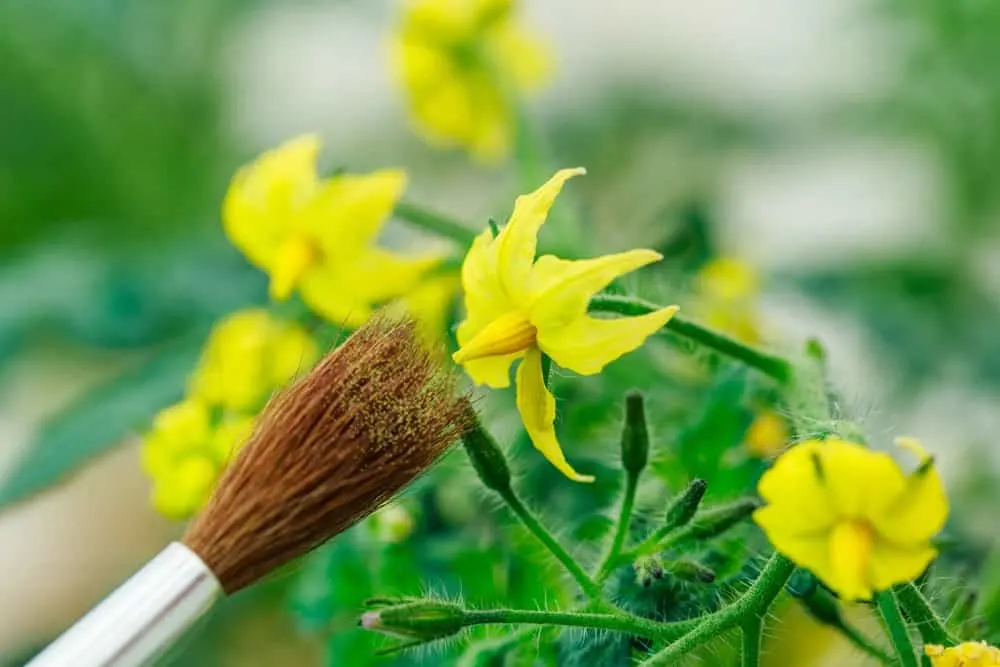
When a pollinator visits a tomato flower, they use vibration to make the pollen fall from the male flower part (anthers) to the female flower part (stigma). Duplicating the vibration is a great way to encourage pollination.
Using a small artist brush is a great way to hand pollinate tomato plants. The brush tip simulates the nectar gathering tool of pollinators in nature.
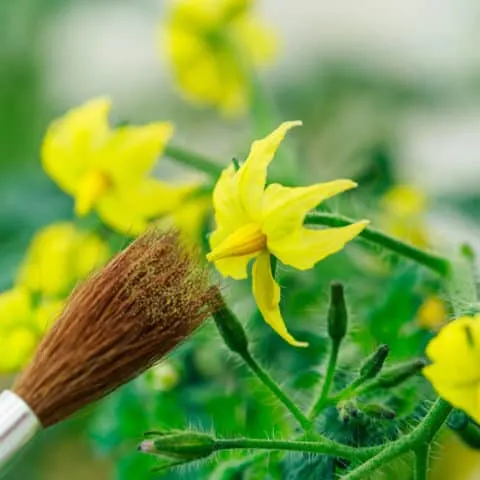
How To Hand Pollinate Tomato Plants
If your greenhouse tomatoes aren't setting fruit, then try this simple hand pollination strategy.
Materials
- None
Tools
- Small Paintbrush
Instructions
- Gently lift up the tomato flower.
- Rub the paintbrush on the inside of the flower lightly back and forth. This encourages the pollen to drop down to the female portion of the flower.
- Hand pollinate around midday every two to three days. Flowers will wilt and fruiting will begin when pollination is successful so keep a keen eye out for this.
- Be sure to use a different brush or wash the original brush in alcohol before moving on to a different variety. If not, you will have cross-pollination.
More ways to hand pollinate tomato plants
Your finger – gently tap on the top of the flower in a high-frequency manner
Electric toothbrush – mimics the vibration of a bee
Cotton swab – great surface area for collecting pollen
More ways to pollinate tomatoes in a greenhouse
Open the doors and windows – If conditions allow, you can open doors and windows to let in natural pollinators and wind that will help with the pollination effort.
Play that funky music – Just having a radio playing in your greenhouse can help pollinate tomatoes. The micro-vibrations will cause the pollen to drop.
Blossom set spray – Also known as blossom set hormone, blossom set spray is available in most garden centers or from this page on Amazon.
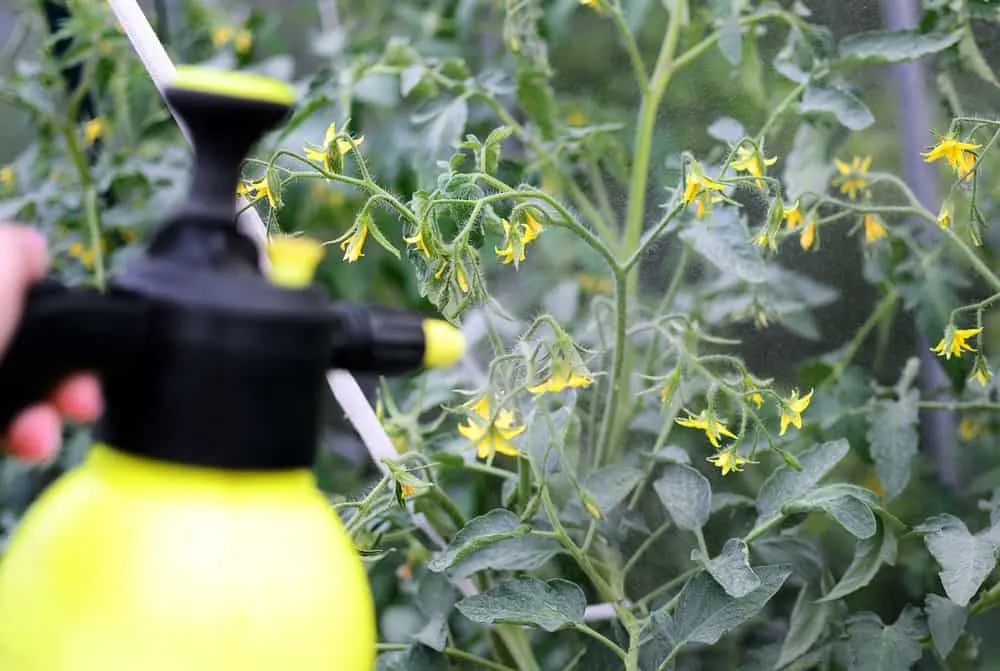
This spray contains a cytokinin hormone that promotes cell division. They help tomato plants grow fruit in marginal conditions such as in a greenhouse where there are no natural pollinators.
Be sure to use only when the first blossoms are starting to open. Spray the blossoms and the attached leaves until the spray is dripping. Use in one week intervals until you see that all the blossoms have set fruit.
More Tomato Growing Goodies
We love talking about tomatoes on Rural Sprout. Here’s some of our most popular tomato growing articles.

Get the famous Rural Sprout newsletter delivered to your inbox.
Including Sunday musings from our editor, Tracey, as well as “What’s Up Wednesday” our roundup of what’s in season and new article updates and alerts.

